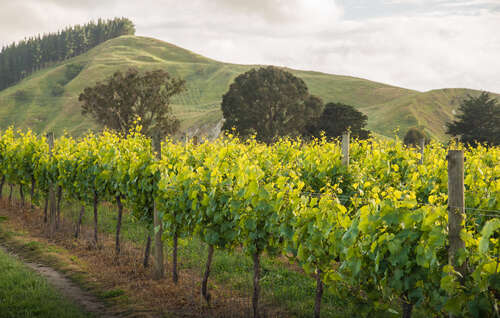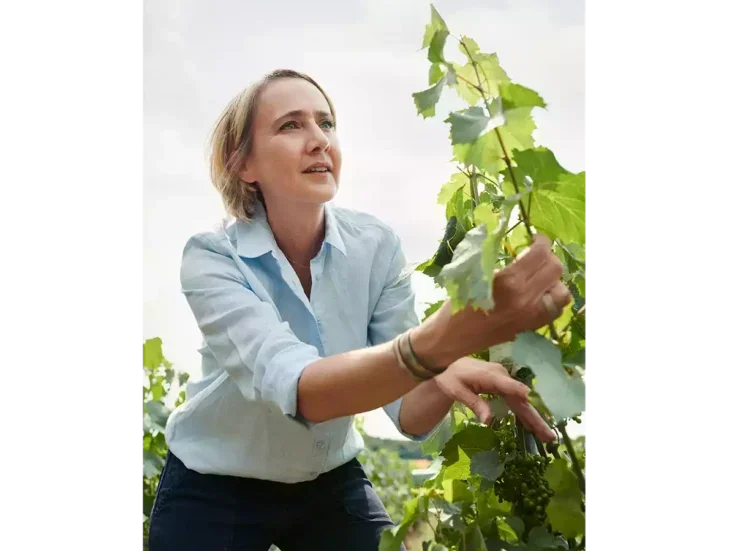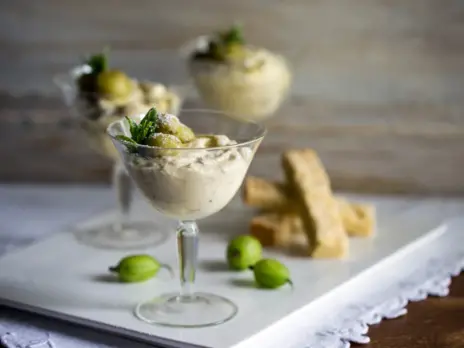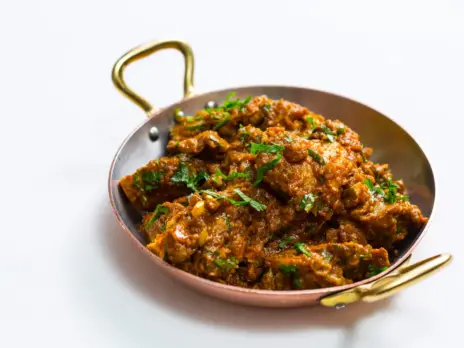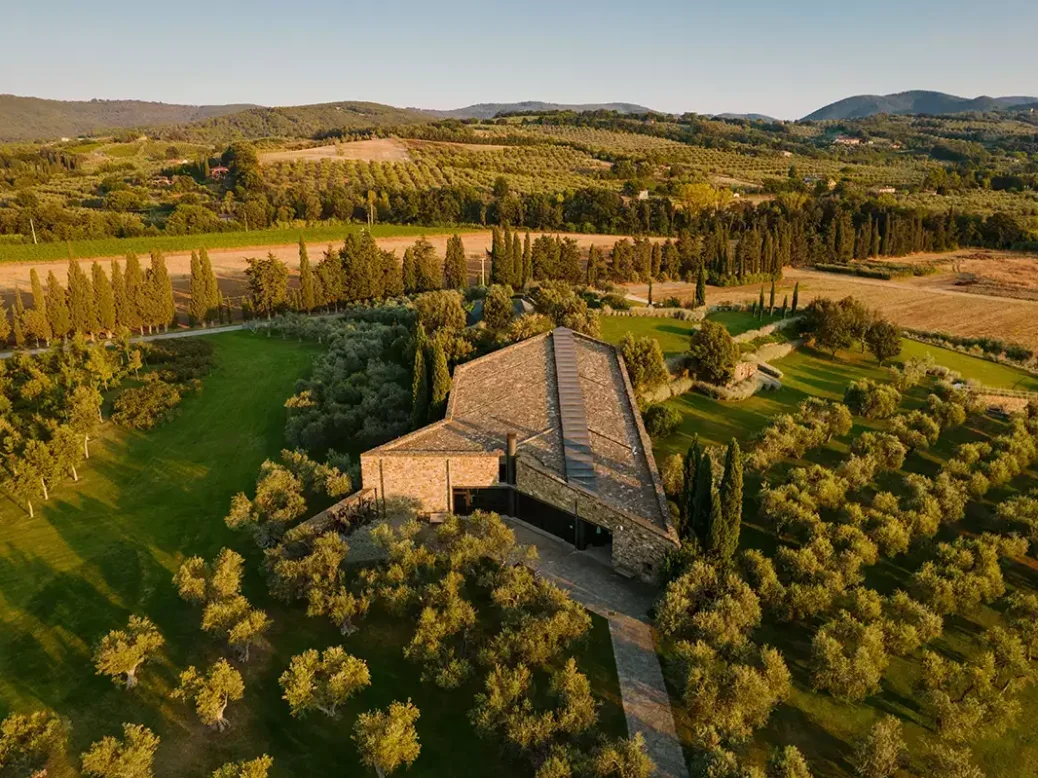
Joanna Simon joins two generations of the Gaja family at Alba restaurant in London for the launch of the latest releases from Ca’Marcanda.
Angelo Gaja is 85 and still working. Why wouldn’t he be? He looks enviably young for his years, the famous energy and optimism seem undiminished, and he has been working in, and expanding, the Barbaresco-based family business for well over six decades. That’s a lot of accumulated experience and expertise. “I believe that I am still useful to my family—even though they don’t applaud me, and they keep the observations I send them in a file called ‘I told you so’”—he said with an infectious chortle, in spectacles that wouldn’t have disgraced Elton John and looking every bit the part in the extravagant surroundings of the new Alba restaurant in London’s Knightsbridge.
Angelo and his son Giovanni were hosting the launch of the new vintage of the flagship wine of their Bolgheri winery Ca’ Marcanda, and Giovanni wanted to make one thing clear straightaway: He, Angelo’s only son and his youngest child, is not his father’s favorite. But then nor is either of his sisters, Gaia and Rossana. “Angelo’s favorite child,” Giovanni told the seated throng, “is Camarcanda. It’s the first wine he built completely from scratch.”
And he built it not in Piedmont but in Bolgheri, an area where wineries existed but where, as the Bolgheri consorzio puts it, “until that time […] no one had come to the area with the precise objective of producing fine wines.” There was Sassicaia, to be sure, but for its first 20 vintages Sassicaia had been made for the Incisa della Rocchetta family’s own consumption.
In 1994, Angelo Gaja saw the potential of Bolgheri—the coastal and mountain influences and the white soils rich in limestone, firm clays, and stones—and he went on to realize it. He not only created the wine from scratch but the entire fine-wine estate and winery of Ca’ Marcanda (pictured below), the words Ca’ Marcanda meaning, in Piedmontese dialect, “house of endless negotiations,” so named because it took so many trips before the purchase of the land was completed in 1996. It was another six years before the winery was completed in line with Angelo’s vision of a building that blended into the surroundings—two thirds is underground—and gave him the potential to make exceptional wines with minimal intervention.

Angelo Gaja with his “infectious chortle.”
Camarcanda (without the apostrophe), the estate’s grand vin, has always been a Bordeaux blend, but it has changed significantly, from Merlot-dominant up to 2015, to a zero-Merlot blend of 80% Cabernet Sauvignon and 20% Cabernet Franc (most of the Merlot being grafted over to the two Cabernets). Since 2019, whole-bunch has also come into the equation—15% that year and 25% since—and less oak is used than in the past: six months in 60hl French oak casks following 12 months in barriques, instead of all 18 in barriques. The two grape varieties are fermented, macerated, and aged separately, then blended and aged for several months in bottle.
Explaining the evolution in style and winemaking, Angelo says, “It’s not a wine with a big body but something lighter.” Adding the word “elegance” rather apologetically, he acknowledges that it’s an overused and subjective word. (Giovanni has no hesitation in using it later.)
The wine may have changed, but Angelo’s mantra hasn’t: “We have to adapt to secure future markets. As producers, we have to see with the eyes of tomorrow, not of yesterday.” That means adapting to climate change, as well as to markets. But can they? “Yes, we can adapt as long as we do it little by little, every day, in the vineyards and in the cellar.” He is grateful now—though he wasn’t at the time—that when he started in the family company after his studies, his father made him spend three days a week in the vineyards getting to know the soils, the vines, the land. “Life in the soil is very important,” he says, which may seem a platitude today, but back in 1961, getting up close and personal to your vines and soils was not what someone with degrees in winemaking and business did.
And climate change has had its positives. “We used to get ripe grapes three years out of ten. Now it’s nine out of ten; and sometimes they’re too ripe,” he says. Instead of waiting as long as they dare to harvest, they now make sure to pick while the grapes are still al dente, even if it means picking on a Saturday or Sunday—unthinkable back in the day.
Elegance from adversity
Just as Angelo was embarking on another current enthusiasm, their new winery in the Alta Langhe, Giovanni got to his feet to talk about the 2022 Camarcanda, poured for us from an Impériale (6-liter bottle).
Camarcanda has not been produced every year, and there must have been times during the 2022 growing season when the Gaja family wondered if it was going to be another of those years. Giovanni describes it as “an incredibly surprising vintage: extreme.” At the very least it was challenging. For much of the season, it was very hot and dry. A drought started in late winter; and from the end of May to mid-August, there were 75 hot, dry days. Then the weather broke, and until the first week of September there was “almost an excess of rain.” Almost.
The vines adapted to the water—the Cabernet Franc and Cabernet Sauvignon especially well—and then benefited from warm temperatures and the drying effect of a sirocco wind. The grapes were picked from late September to October 3 and, despite all that had gone before, had high acidities. The worrying heat and drought had slowed vine growth, preserving acidity and giving, in Giovanni’s words, “wines with beautiful freshness and elegance.” The growing season may not have been a bundle of laughs, but the outcome brought smiles all around. “We love these vintages where we can really express our style,” he concluded.

Tasting
2023 Ca’ Marcanda Vistamare Toscana
(40% Vermentino, 40% Viognier, 20% Fiano; Vermentino and Fiano fermented and aged in stainless-steel tanks and Viognier fermented and aged in 40hl French oak casks; bottled in March 2024)
This was a wet year that needed dedication in the vineyards, but it brought good results in the end. The harvest began on August 20 with Viognier and ended (for whites) on September 20 with Fiano. Heady, sweet citrus and floral scents lead into a succulent palate accented with ripe lemon and herbs and glimpses of apricot and acacia honey. The rounded, almost oily texture is sliced through by citrus acidity and a sea-spray finish. | 92
2022 Ca’ Marcanda Camarcanda Bolgheri (Impériale)
(80% Cabernet Sauvignon, 20% Cabernet Franc, 25% whole-bunch, the two varieties blended after 12 months in barriques and 6 months in 60hl casks)
A year notable for persistent drought and heat and highly unevenly distributed rainfall, most of it falling in late 2021 and then at the end of the season. Despite this, acidities were high, and the wine has an unequivocal brightness of character and purity of fruit. It opens with a violet floral fragrance and lifted red fruit—raspberries seeded with exotic incense and spice—and then flows into a deft, medium-weight palate buttressed by very gently reverberating, smoothly polished tannins. Fine lines of balsam, bitter herbs, and salinity provide refreshment—and make it hard not to feel that mountain and sea are both making their presence felt. It’s so harmoniously layered and sustained that it’s complete and satisfying already, but it will clearly reward patience. | 94
2020 Ca’ Marcanda Camarcanda Bolgheri(80% Cabernet Sauvignon, 20% Cabernet Franc, 25% whole-bunch, the two varieties blended after 12 months in barriques and 6 months in 60hl casks)
In another disturbed growing season, the challenges included a warm winter and a spring marked by two frosts, temperature fluctuations, and frequent rains. Summer temperatures were moderate, with no heatwaves until mid-September, but then several rainfalls interrupted the harvest. The color of the 2020 is, surprisingly, darker and more purple than the 2022 from Impériale, and the nose is darker and more brooding, too, but only at first. It quickly opens out into black fruit and blueberries—intense and fresh—with spice in the black-pepper spectrum rather than exotic spice, then balsam, as in the 2022, and aromatic Mediterranean herbs, including fresh bay leaf that I take to be the Cabernet Franc (which was said to be of excellent quality—more so than the Cabernet Sauvignon). There’s also an arresting hint of coffee-bean bitterness that isn’t oak. The palate is mid-weight, persistent, and modulated with silk-smooth, softly tenacious tannins and a lightly salty, lively, mineral finish. | 94
2019 Ca’ Marcanda Camarcanda Bolgheri
(80% Cabernet Sauvignon, 20% Cabernet Franc, 25% whole-bunch, the two varieties blended after 12 months in barriques and 6 months in 60hl casks)
The growing season went from cold, dry winter to stormy spring showers, then back to extreme dryness in June and July, accompanied by very high temperatures. The weather broke at the end of July, bringing plentiful rain and much lower temperatures. Although August saw further downpours, drying tramontane winds in September led to very healthy, ripe grapes and high expectations in Bolgheri as a whole. A sweeter, richer, nose with red-cherry and dark-berry fruit: a little more flamboyant than 2020 and 2022 but lifted by the characteristic sappy, sweet note of aromatic herbs and pine. Licorice and a touch of bitter chocolate bring savory depth to the palate, fine-suede tannins give structure, and a saline note on the finish refreshes this slightly more powerful expression. I think some tasters will prefer it. | 94

